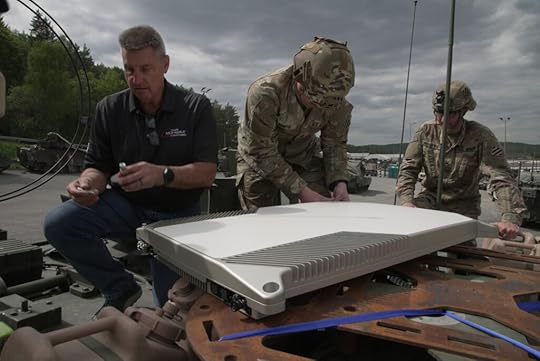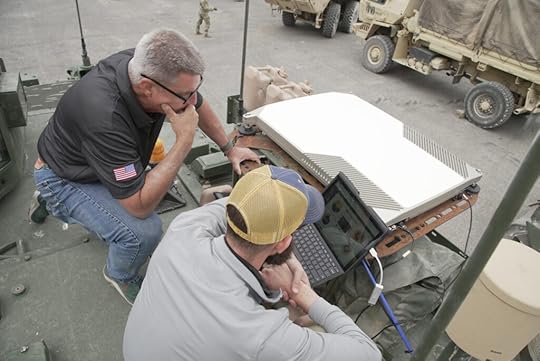Next-generation C2 won’t be next-gen without the network transport
The Army’s Next Generation Command and Control (NGC2) effort aims to provide more robust data transport and analytics capabilities with expanded network connectivity to higher echelons, while also supporting emerging requirements like ground/air robotics and sensor integration.
Up until today’s time, though, the design of the Army’s mission command systems were primarily function specific. They weren’t intended to integrate and share data in an intuitive fashion across formation staff functions or even with coalition partners, which meant that data aggregation to ensure teammates received the right data and permissions for their mission was challenging.
According to the Army, NGC2 will provide capabilities that bring large, rich mission command and data packages across all echelons.
Of equal importance and a priority in enabling the right data to reach the right location, notes Thales Defense & Security, Inc. (TDSI), is the network transport layer. The pipes for all manner of C2 data – from terrestrial to space – should, in part, build upon invested infrastructure such as advanced secure waveforms, resilient satellite connectivity, and advanced network management tool kits, while also incorporating new innovative and less complex capabilities.
More importantly, the network transport layer should also leverage a hybrid architecture for NGC2 combining tactical radios, 5G, WiFi, and multi-orbit satellites.
“Army leaders have recognized over the last few years that 5G capabilities and WiFi are tools in the toolbox,” said Gary Kidwell, vice president of communications systems at TDSI. “There’s not any one particular technology – even the HMS handheld, manpack and small form fit radios that we provide today – that is the be-all end-all for every network globally. 5G has its place in the architecture the same as WiFi does.”
Leveraging commercial communication options mixed with secure resilient systems will give commanders multiple communication options to share information with coalition forces in a variety of environments. What this means for warfighters is that pushing more data across a unified network will support multi-domain operations where shooters can access sensors that may not be directly on their network and can get battle-damage assessment in a continuous loop on the same network in real time.
 Soldiers from elements of the 3rd Infantry used satellite terminals and EDGE network kits in a variety of missions, including fires and on the move mission command. (Photo courtesy of Thales Defense & Security, Inc.)
Soldiers from elements of the 3rd Infantry used satellite terminals and EDGE network kits in a variety of missions, including fires and on the move mission command. (Photo courtesy of Thales Defense & Security, Inc.)A gateway for agnostic comms and C2
A key to helping the Army solve NGC2 data transport challenges will be agnostic communications solutions and a gateway to link new and legacy communications systems. Network kits solutions should allow general-purpose users to plug-and-play any network communications system from current radios to coalition radios, commercial radio, and SATCOM. Kits must also provide robust 5G and LTE communication options to allow for prioritized data package transmissions across division echelons.
Transformation In Contact (TIC) unit feedback and independently conducted Soldier Touch Points have emphasized the need for compute/store and resilient communications capability to be packaged into the smallest of form factors to allow commanders to receive and transmit data packages while on the move. Communication kits should allow network connectivity to be a force multiplier not a burden on maneuver units, and provide cross domain and gateway capability for formations to choose whatever radio or commercial communication pathway is appropriate for the operational environment.
TDSI is already providing such capabilities through its expeditionary EDGE and EDGE-Lite command post kits, which were designed with these principles in mind. Already provided to some US Army and Special Operations forces, the EDGE (Expeditionary Data and Gateway Equipment) family of kits provide not only PACE communications network management tools but network resiliency by cross-banding all military and some commercial capabilities like 5G/LTE, while providing a plug-and-play baseband for a variety of SATCOM terminals. The same agnostic radio architecture accepts, in the case of the full EDGE variant, up to three different tactical radios of any vendor model for maximum interoperability.
As part of an iterative design process, TDSI continues to make kit refinements based on user feedback such as giving commanders a local store and compute capability at the edge and in EW-disrupted environments when they can’t reach back to the cloud, plus network management software applications to ensure ease of use.
EDGE was tested recently with the 3rd Infantry Division out of Fort Stewart, GA, as part of Combined Resolve 25-2 in Germany, where the emphasis was on commander and formation desire to leverage systems that provide networked command/control on-the-move. Ease of system use to include initialization by general purpose users was also stressed.
For Combined Resolve, EDGE and EDGE-Lite kits were in use at the brigade main command post and at certain battalion levels to maintain network connectivity and command/control on-the-move. EDGE kits, supported by ESA SATCOM terminals and tactical data radios, facilitated connectivity supporting the brigade’s ability to monitor the movement of mounted and dismounted formations and provide direct messaging and location information of nodes for the brigade commander and staff.
Additionally, the fires unit leveraged EDGE capability for its fires operators to conduct mission command and provide needed compute/store capability at the headquarters.
 Soldier feedback from exercises during Combined Resolve 25-02 was used to help inform next generation command control related capability options. (Photo courtesy of Thales Defense & Security, Inc.)
Soldier feedback from exercises during Combined Resolve 25-02 was used to help inform next generation command control related capability options. (Photo courtesy of Thales Defense & Security, Inc.)Leveraging LEO, MEO, and cloud
In addition to agnostic communication kits, the Army has indicated that it will strongly leverage proliferated Low Earth Orbit (LEO) satellite comms technologies. EDGE provides organic connectivity to both Iridium Mission Link and Starshield constellations.
Satellite terminals such as the robustly fielded Thales Tampa Microwave parabolic family will make use of new easy to install certified kits to achieve MEO connectivity, while new electronically steered array (ESA) terminals such as the GetSat DUO terminal will provide on-the-move multiband and multi-orbit connectivity. As the Army has stated, the goal is to give commanders diverse transport options to allow them to make threat-informed, risk-based decisions about which tool they will use to move their data at which point in the fight.
Cloud capabilities are also front and center for NGC2, and each EDGE configuration includes the necessary compute to enable NGC2 cloud services. For transport-required capabilities, EDGE’s compute and transport capability enable connection to cloud services in an NGC2 environment by supporting latency-sensitive services that include real-time data and analytics, cloud services that can span various layers, and compute capabilities that allow access to the various services according to a mission’s needs.
Both AI and ML models require compute capabilities for data collection and training, performing, and processing. Depending on the scale, AI and ML workflows rely widely on compute for their training to create patterns and learn from the data. To perform, the models would then rely on compute to relay the information in real-time from various sources such as drone feeds or sensor solutions.
With the ability to take EDGE kits virtually anywhere a mission is driven, TDSI provides compute to ensure that any variety of features and applications can be included when considering the overall design of the mission. Continued processing of all functions certainly relies on the ongoing compute that is among the capabilities provided by EDGE.
As the Army’s NGC2 program continues to solidify, the agnostic transport network made possible by TDSI’s EDGE kits can efficiently and cost effectively enable the vital transport function needed.
Douglas A. Macgregor's Blog
- Douglas A. Macgregor's profile
- 28 followers



